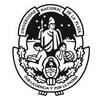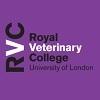Explore all the information on
Swine health
Pig diseases can be caused by bacteria, viruses, protozoa, nutritional deficiencies, poisonous substances, internal and external parasites.
Bacterial diseases include swine erysipelas, swine dysentery, infectious poly-arthritis etc. Viral and mycoplasma diseases include African swine fever, swine influenza, enzootic pneumonia of pigs, vesicular exanthema of swine, transmissible gastroenteritis etc. Helminthiasis as a health problem in pigs is mainly caused by worms like the lungworm, ascaris worm etc. Nutritional diseases include piglet anemia, parakeratosis etc. External parasitic infections include mange, lice, jiggers etc.
How to tell that a pig is in bad health:
General signs: dullness, loss of appetite, labored or rapid breathing, sudden deaths, loss of weight, low weight gain and fever usually manifested by shivering of the pig.
Signs expressed on the skin: reddening of the skin or skin discoloration, loss of hair and hardening of some parts of the skin, itching and cracking of the skin.
Other signs: lameness, cough, abnormal nasal discharges, diarrhea with a putrid smell, abnormal content and color of feces and abortions.
Introduction: Traditionally, bacteriological diagnostics are based upon colony-morphology and biotyping. During the later years, MALDI-TOF-identification has broadened the spectrum of bacteria that can be identified in laboratory submissions. Four case-stories on potentially important pathogens are presented. Materials and Methods: Case 1: Massive problems with arthritis around weaning. 4 piglets were examined. Deeply cut teeth and swollen joints with...
Comments : 0
Recommendations: 0
Introduction: S. suis is recognised as major swine pathogen associated with the intensification of the swine industry worldwide. Until now limited number of effective vaccines are available. Therefore antimicrobial treatment is considered as one of the most effective approach for the control of streptococcal meningitis and polyarthritis. Beta-lactam antibiotics and especially amoxicillin is considered as drug of first choice based on several criteria such as the PK/PD...
Comments : 0
Recommendations: 0
Over the last 30 years, diseases caused by emerging swine viruses (ESV) have acquired great relevance, more than in other species. Diseases caused by porcine reproductive and respiratory syndrome virus (PRRSv), high pathogenicity porcine epidemic diarrhea virus (PEDv), porcine circovirus type 2 (PCV-2), and influenza virus H1N1pdm09 had great economic impact. Others, however, such as porcine enteroviruses, porcine toroviruses (PToV), porcine sapelovirus (PSV), porcine bocavirus (PBoV),...
Comments : 0
Recommendations: 0
Introduction Piglet post-weaning diets are by far the most expensive diets in the swine industry, mainly due to the need to reduce Post-Weaning Diarrhea (PWD) and optimize growth performance by including highly digestible feed ingredients with low content of antinutritive factors. It would therefore be economically advantageous, if some of the expensive protein sources that are generally considered necessary in diets for newly weaned piglets could be substituted with soy bean...
Comments : 0
Recommendations: 0
...
Comments : 0
Recommendations: 0
...
Comments : 0
Recommendations: 0
Breno Beirão (Universidade Federal do Paraná, Brazil) commented on the needs of farmers in order to make a successful transition and comply with the current demands of the industry, during IPVS2022 in Rio de Janeiro, Brazil....
Comments : 5
Recommendations: 1
...
Comments : 0
Recommendations: 0
Introduction: Respiratory diseases provide major concerns regarding production efficiency, animal welfare, antibiotic treatment and consumer protection. Variable combinations of interacting etiological agents and management conditions are source of high complexity and led to the term of the Porcine Respiratory Disease Complex (PRDC). Clinical signs appear late in PRDC and even with cross-pathology and lung checks are not suited to detect all relevant components of the...
Comments : 0
Recommendations: 0
Introduction: Classical swine fever (CSF) is a highly contagious disease that needs to be confirmed by laboratory diagnosis due to highly variable, often unspecific clinical symptoms. Extensive serological investigations in the context of surveillance programs are required to demonstrate freedom from infection. In the European Union, a strict ‘stamping-out’ strategy is applied in case of a CSF outbreak. Given ethical and socio-economic concerns, application of...
Comments : 0
Recommendations: 0
Introduction: Porcine reproductive and respiratory syndrome (PRRS) is among the diseases with the highest economic impact in pig production worldwide. Losses due to the disease were estimated as high as 560 Mio. US$ per year in the USA. Yet, the economic impact of the disease at farm level is not well understood as, especially in pig herds chronically infected with PRRS virus, the losses caused are often not obvious for farmers and veterinarians Thus, the aim of this study was...
Comments : 0
Recommendations: 0
Introduction: Swine Respiratory Disease (SRD) is a complex condition involving viral agents and bacterial agents such as A. pleuropneumoniae , H. parasuis and P. multocida . These organisms often act together to increase the severity and duration of the disease, therefore, appropriate control of these pathogens is important for swine health management. The present abstract refers to the field efficacy of ZACTRAN®, Merial in comparison with...
Comments : 0
Recommendations: 0
Introduction: Benchmarking data using computer software programs has been integrated into the swine industry for decades to provide an opportunity for improved management. Antibiotic benchmarking is a relatively new production tool being introduced to swine herds in Canada. Antibiotic benchmarking provides an opportunity for objective discussion between the veterinarian and producers in prudent use of antibiotics including selection of product, usage, dosage, timing and...
Comments : 0
Recommendations: 0
Introduction: To address concerns of antibiotic (AB) resistance in both human and animal health, approval of veterinary antibiotics requires an assessment for potential impact on resistance development in food-borne pathogens (FBPs). During treatment for Swine Respiratory Disease (SRD), populations of FBPs and commensal organisms from the genera Escherichia coli (Ec), Salmonella (Sa), Enterococcus (En) and Campylobacter (Cb) may be impacted....
Comments : 0
Recommendations: 0
Introduction: Antimicrobial resistance is a concern in the antimicrobial therapy of both humans and animals. Knowledge on the actual susceptibility and its development over the years is important for ensuring long-term antimicrobial efficacy. Therefore, in the early nineties of the past century Bayer has established a susceptibility monitoring program for target animal pathogens obtained from food producing animals in Germany. Here, the susceptibility status for enrofloxacin,...
Comments : 0
Recommendations: 0
Wes Schweer (Zinpro) shared insights on this metric during research, in this Swine It interview with host Laura Greiner....
Comments : 1
Recommendations: 0
Marina Kamoei (Merck Animal Health) discussed ileitis and the impact of intestinal diseases on production, during IPVS2022 in Rio de Janeiro, Brazil....
Comments : 1
Recommendations: 1
INTRODUCTION Mycotoxins are secondary metabolic products of fungi with toxigenic effects in other living species. Worldwide, about 88% of animal feed and feedstuffs are contaminated with at least one mycotoxin [1]. Fusarium toxins are the most prevalent, where deoxynivalenol ranks at first with 64% of occurrence, followed by fumonisins and zearalenone [1]. In pigs chronically fed deoxynivalenol contaminated diets, it is observed increased expression of interleukin 8 and...
Comments : 1
Recommendations: 0
Our sow cannot stand. Its back legs have no strength. It doesn't eat unless fed through a syringe. It's 1 week now since it became like paralyzed. It is 3 months and 15 days pregnant now. We have injected her antibiotics and vitamins but no effect. What should we do? ...
Comments : 4
Recommendations: 0





















